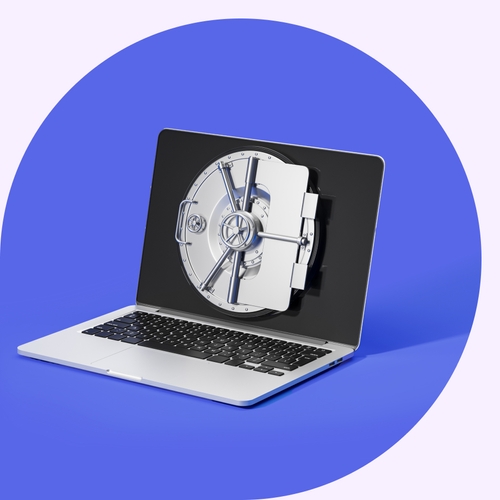須知事項:
- 儘管企業高層極力想透過 AI 提升效率,員工對隱私與資安的疑慮卻形成了「AI 採用矛盾」。
- 在 Slack,信任的概念深植於 AI 開發過程中,我們不只確保安全性,更堅持以人為本的設計。這樣的做法使我們得以將 AI 矛盾轉化為不斷發展的創新之路。
人工智慧在商務應用上已經走到一座分水嶺。曾經只存在於研發實驗室中的技術,如今正徹底改變企業解決招募人才、控制成本,以及加速數位轉型等重大挑戰的方式。代理式 AI 尤其受到重用,只需花費低廉的營運成本,就能加速工作流程、減少瓶頸,並隨時取得回應。
根據 Slack 最近的一項問卷調查,各企業確實打算優先發展這些方向:94% 的企業高層表示計畫在未來 12 個月投資 AI;84% 的高層則傾向導入代理,將工作自動化、擴大規模並提升效率。
然而,同一份數據也顯示,不只是高層,有 41% 的員工擔憂風險問題,尤其是隱私權、著作權與法律責任這幾個方面。這帶出了 KPMG 所指出的 AI 採用矛盾:創新與掌控權、速度及確定性之間的拉鋸戰。
打破僵局:落實可信任的 AI
創新的速度取決於信任。在 Slack,我們堅持信任不只是形式上的原則,而是必須在實際工作的每個環節中落實。
在這個數位代理時代,要真正落實信任,就必須從根本上打造具備透明度、安全性且以人為本的系統。我們可以這麼做:
- 從跨部門監督做起:從一開始就集結法務、IT、營運與前線團隊,確保風險評估全面且完善。
- 預設啟用權限控管和觀測功能:採用能自動執行存取控制並保留稽核記錄的平台,無需事後補強。
- 將 AI 部署在實際工作場域,而非資訊孤島中:將 AI 內嵌在既有工作流程中,有助於大量減少資料遷移與情境切換,提升速度與安全性。
- 設計具備人工把關機制的工作流程:建立具有明確提報處理機制、出錯防護與檢查點的工作流程,確保重大決策仍由真人掌控。
- 將速度與安全當成衡量成效的雙標準:真正的創新應能加速產出成果,同時強化安全性與法規遵循。信任是加乘力量,而非絆腳石。
選擇擁有這種理念的平台,各大組織便可將 AI 採用矛盾開拓成一條不斷發展的創新之路。
落實信任:Slack 讓效率與安全兼得
Slack 以信任為核心,確實實踐上述原則。
Slack 奠定良好基礎,在加密、法規遵循、管理控制與負責任 AI 使用等方面提供支援,讓企業能安心採用代理式 AI。客戶也能透過標準的工作空間層級保留設定、可自訂匯出功能以及內容刪除機制 (Slack 信任中心),完全掌控自己的資料。
資料在傳輸過程中與靜態儲存時皆經過加密,Slack 還可設定為符合業界法規及國際安全與資料隱私權標準。除了多項全球公認的法規,我們還符合安全與資料隱私權架構、計畫要求與標準,協助客戶在 Slack 環境中控管風險並確保資料安全無虞。
Slack 採用的 AI 與機器學習 (ML) 技術也不例外,皆遵循相同的信任承諾:
- 不會將客戶資料用於訓練生成式 AI 模型。
- 資料不會外流至其他工作空間。我們在建構和訓練 ML 模型時,絕不會讓它們能夠重現客戶資料。
- Slack 的 AI 與 ML 只會呈現使用者原先就能存取的資料。
來看看 Slack 如何將原則付諸實踐:
| 信任原則 | Slack 的做法 |
| 主動防範風險 |
內建異常偵測、DLP 整合與管理員角色、即時監控與警示,以及稽核 API。 可自訂的資料保留政策、存取流程和自動化工作流程,預防過度分享資料。 讓所有使用者都能啟用雙重驗證和 SSO。 |
| 預設採用安全設定 |
Slack 的 AI 絕不會使用客戶資料來訓練生成式 AI 模型。 內容僅保留在作業系統中,並預設啟用刪除訊息、有限資料匯出及端對端加密功能。 |
| 極少量資料存取原則 | 從加密、存取控制到 AI,Slack 在各層架構中都融入隱私權設計。隱私權不是附加功能,而是基本權利。 |
| 精細使用者控制選項 | 管理員可依據工作空間需求,自訂資料保留、刪除、匯出和存取權等精細設定。 |
| 端對端安全性 |
Slack 會將靜態與傳輸中資料加密、提供即時監控工具,並支援與 CASB 與 SIEM 等資安平台整合。 AI 在這些安全機制下運作。 |
| 能見度與透明度 | Slack 的 AI 會明確呈現產生的內容,並確保頻道、對話串和活動內容都一清二楚,以利監督。 |
| 人類參與的監督機制 | 代理與 AI 始終是輔助工具,絕不會取代人類制定決策。Slack 的 AI 只能存取請求者有權查看的資料,不會超出這個範圍。 |
這些原則不是可以簡單了事的待辦事項,而是構築可擴展且受信任 AI 的核心。
信任是創新基石
邁向未來工作的新階段,信任不只是基本門檻,也是最佳利器。雖然 AI 矛盾確實存在,但並非無解。只要秉持正確原則,AI 不一定等同於風險,還能真正發揮價值。為維護使用者信任而打造的平台能化解難以速度、創新及安全性三者兼得的問題。Slack 自始便以安全與透明為設計核心,在快速發展的 AI 技術與使用者信任之間搭起堅實的橋樑。
在創新步伐如此迅速的情況下,最大的風險不是採用 AI,而是裹足不前,無法與時俱進。代理式 AI 帶來擴展決策力,還能提高生產力,同時讓企業在講求速度、脈絡和信任的環境中仍能保持競爭力。
重要的是,能夠將溝通、資料與代理式 AI 整合進工作流程的系統,才真正具備解決 AI 矛盾的關鍵條件。這類平台能減少摩擦、加速採用,並將治理機制帶入實際工作環境。不是採取事後補救的做法,而是納入設計考量。
到頭來,真正引領創新的正是那些處處落實信任的企業。在 Slack 使用 AI,團隊可以確保資料安全、工作流程遵循法規,我們將不辜負對我們的信任,幫助團隊更快速締造亮眼表現。
準備好開始使用 Slack 的 AI 了嗎?
- 按一下此處找到適合團隊的方案
- 聯絡 Slack 管理員請求存取權
- 洽詢銷售團隊以深入瞭解並取得存取權






